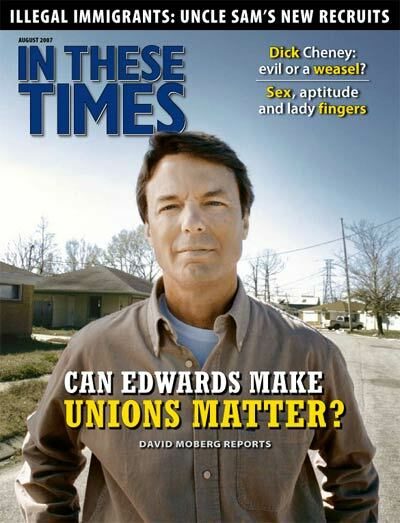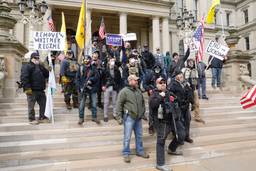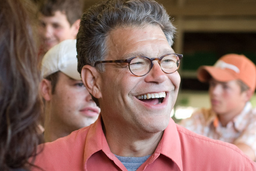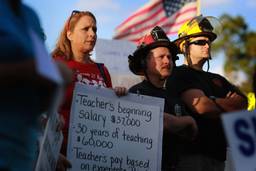Civil War by Other Means
Rigoberta Menchú’s presidental bid could turn the page on Guatemala’s bloody past
Jacob Wheeler
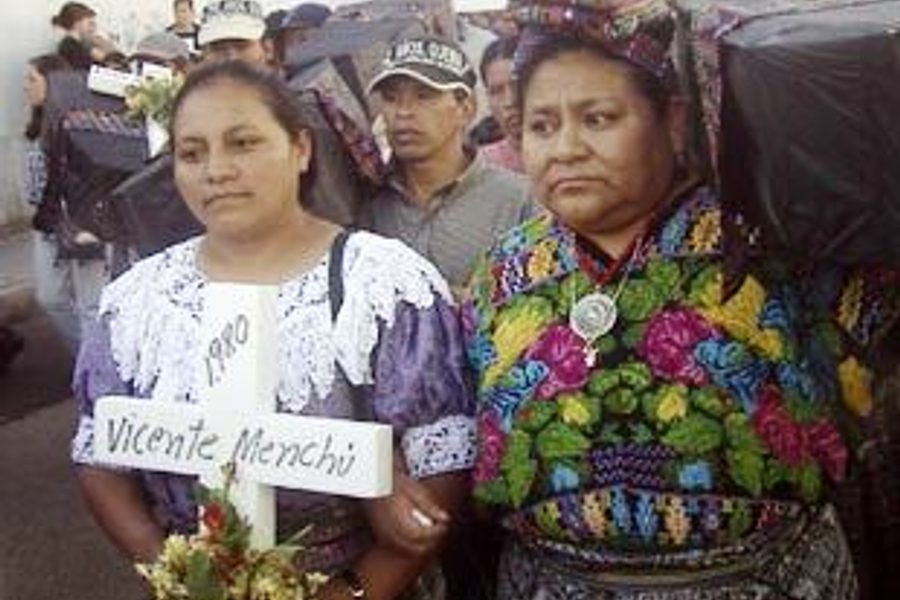
Guatemalans will go to the voting booths on Sept. 9 for their third national election since the country’s bloody civil war ended in 1996. But 11 years later, the miseries of the 36-year conflicto armado, and its most notorious characters, are still visible across the landscape.
On one side is the Mayan indigenous-rights activist Rigoberta Menchú Tum, who etched her name in Guatemalan history after winning the 1992 Nobel Peace Prize for her work exposing the atrocities of the civil war. She is known internationally for her memoir, I, Rigoberta Menchú, which brought to light the murder of her family, and the suffering of her people, at the hands of the U.S.-trained and -funded military counterinsurgency. Menchú is running for president, and though she is a long shot to reach the likely run-off on Nov. 4, the fact that she has entered the political mainstream after hiding out in Mexico and France during the ’80s speaks volumes to how far the country has come since the military put a price on her head.
On the other side is El General, Efraín Ríos Montt, the former dictator and evangelical preacher who, as general, and briefly, president, presided over the bloody massacres that raged between the coup d’etats of March 1982 and August 1983. Montt is running for Congress this fall, and is almost guaranteed a seat since he heads the list of candidates for the right-wing Guatemalan Republican Front, one of the country’s two largest parties.
If Montt wins, the 81-year-old will secure immunity – at least for the four-year length of his term – from a lawsuit charging him with genocide brought by Menchú and other activists. Those charges were initiated in the Spanish National Court in 1999, and in July 2006, Spain issued international arrest warrants for Montt and seven other former military and civilian officials for their role in setting fire to the Spanish embassy in 1980, which killed the peasant activists hiding inside, as well as crimes committed during the “scorched earth” campaign of the early ’80s that wiped out about 440 indigenous villages.
Prensa Libre, the main national newspaper, reported in January the discovery of “Plan Sofia,” which links the Army high command to Montt in July 1982 – four months after he seized the presidency. With Montt’s authorization, Plan Sofia intended to “deny guerilla access to the civil population, those who nourish them and within whom they hide. … The destruction of the guerilla forces is the mission.” The Guatemalan Attorney General’s office has yet to act on it.
The town of Nebaj, in the northwest department of Quiché, was the site of one of the massacres carried out under Plan Sofia. Early one morning in September 1982, military helicopters flew over the village and opened fire, believing that rebel forces were hiding there. A seven-year-old boy named Diego Rey Mundo de Leon was one of the villagers who ran toward the mountains to escape the helicopters – right into the awaiting sights of a machine gunner’s nest, which mowed them down like stalks of corn. Miraculously, the army found the boy alive and took pity on him, airlifting him to Guatemala City where he was saved and taught Spanish by the soldiers. More than two decades later, when asked what Leon would do to Ríos Montt if he had the dictator alone in a room, the otherwise soft-spoken young man swore, “I’d kill him with my bare hands.”
As for Menchú, the 48-year-old Quiché-Mayan activist lost both of her parents, two brothers, a sister-in-law, and three nieces and nephews to the military death squads. Her father, Vicente Menchú, was among the 39 peasants and student activists who occupied the Spanish embassy that Montt’s fellow defendents are charged with setting alight. In 1981, Menchú went into hiding, and fled to Mexico. Two years later, in Paris, she told her life story to the Venezuelan-French writer Elisabeth Burgos, who transcribed I, Rigoberta Menchú. But even after winning the 1992 Nobel Prize, Menchú was only able to safely return home after the Peace Accords were signed in 1996.
Guatemala’s most famous Mayan Indian since the legendary Tecún Aman, who fell while fighting the Spanish conquistadores, has now put aside her activist label. According to newspapers, she trails both Álvaro Colom of the left-of-center National Union of Hope and Otto Pérez Molina of the right-of-center Patriot Party by wide margins. But that an indigenous woman is running at all would have been unfathomable 10 years ago.
“She’s a national hero who isn’t nearly as radical anymore,” says Iduvina Hernandez, executive director of the Association for the Study and Promotion of Security in a Democracy, which monitors threats against human rights in Guatemala. “It’s a positive sign that she’s running, though she doesn’t have a chance to win. She’s merely testing the waters.”
Enrique Davis, an advisor to Menchú based in Mexico, admits that, if elected, she wouldn’t try to carry out the kind of radical agrarian reforms that prompted the United States to engineer a coup in 1954 against the leftist government of Jacobo Arbenz – an action that spiraled the country into civil war six years later. But, Davis says, she would push for economic and social responsibility sorely lacking in a country where 10 percent of the population owns half of the wealth, and more than 50 percent survive on less than $2 a day.
“She’s not going to close your business or socialize things,” he says, referring to Guatemala’s rich, landowning and mostly light-skinned elite. “But you need to pay taxes and accept some co-responsibility for making the country better. It’s not enough to become a millionaire – you have to do something for this country, too.”
As for the nightmares of the country’s past, Menchú won’t forget them, and the lawsuits against the likes of Montt will continue until they are brought to justice. “We need to continue forward,” says Davis, “and not just talk about the past, but these lawsuits are part of the healing process, and they will continue.”
The ultimate irony would be if Menchú somehow won the election, and her nemesis Montt seized the top spot in Congress. According to tradition, the man accused of genocide would swear in the victim, and place the banda presidencial, a cloth with the blue and white colors of the Guatemalan flag, on her shoulders.
Jacob Wheeler is a former In These Times assistant editor. He edits and publishes the Glen Arbor Sun in Leelanau County, Mich.
